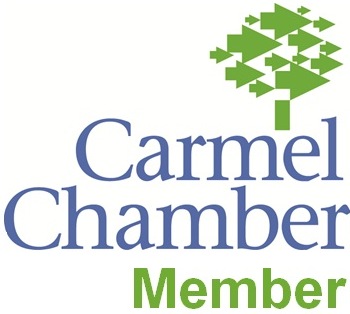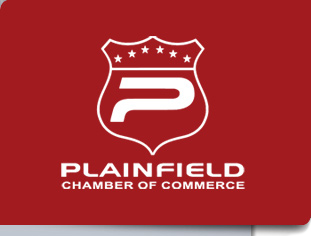How homeowners are killing their own loan modifications
Homeowners don’t need to be contributing to their own demise and potential foreclosure. But most homeowners are killing their own chances for a loan modification right from the start because they don’t understand the full impact of the financial form.
Someone once said that a single death is a tragedy, a million deaths is a statistic. The same could be said for foreclosures, and you don’t want to be a tragedy or a statistic. Projections for this year are as high as 2.4 million homes that will be lost to foreclosure. This is horrible and mind numbing. If these numbers are right, then at 2.5 people per household, foreclosures will affect 6 million people this year alone!
And here is a loan modification tragedy. Homeowners are doing something totally wrong - they don’t know it, and it is killing their chances before they even begin. Then the lenders take over from there, throwing up absurd roadblocks, losing documents, giving conflicting feedback — apparently going out of their way to make this process as difficult as possible. How else to explain, according to one source, that lenders with “high success rates” are approving not more than 5% of loan modifications?
There’s not a whole lot a homeowner can do to control the bank’s behavior, but they can do something to avoid being a tragic contributor to their own demise.
Things go so horribly wrong for homeowners because they are told to complete a document called the financial form. Homeowners have absolutely no idea whether the numbers they are presenting to their lender are helping or hurting their chances for approval. It is easy to understand why this happens.
The lender gives the homeowner a blank financial form that asks for raw data. The lender does not explain how they will use this data or how critically important this is. They act as if they are worried about giving away trade secrets, or something. A lender once told me on the phone that they couldn’t possibly tell me because then they would be “telling the homeowner how to fill out the form.” Isn’t that a novel idea? Actually help the homeowner get a loan modification! So the homeowner blindly fills out the financial form in good faith and total ignorance as to the consequences.
Here’s the truth loan about modification financial forms. If you don’t get your numbers right, there’s no point in doing anything else. Either you get your financials right - or get denied, and start staring down the pain of foreclosure. It’s that simple.
Lenders contribute to this destructive force by regularly encouraging homeowners to give financial information off the top of their head over the phone. They generate a sense of urgency and an impression that they need these numbers now. Never, never do this! Do you really want your lender to make their decision about you keeping your home, based on the numbers you blurted out while driving your kids to soccer practice?
Spend time going over your numbers carefully, and if you don’t understand the consequences of the numbers you are presenting to your lender then get some help. Spring for an hour with an accountant. Talk with a good loan modification specialist or attorney (a good one — not someone who calls you out of the blue sounding more interested in getting $2000 from you). Offer to pay them a fair price for an hour of their time, explaining that you want someone to look over your financials before you submit them to your lender.
Give your financial form the careful thought it deserves. Your numbers have to tell a convincing story that supports you getting a loan modification with lower payments. Make sure you understand your numbers’ “story” before you call your lender. Use this general guideline: your numbers should show that you can afford to make a mortgage payment, just not the one your lender is currently requiring of you. Hold on to that “truth” and you will have just vastly increased your chances for success.
Do You Have a Plan for Managing Your Risk?
by David Rice
How does your facility manage its risk? Do you have a plan? More to the point, do you have a Risk Management Plan (RMP) in place at your facility? Should you have an RMP at your facility? Do you even know what an RMP is or who is required to have one? If not then it may be time to take stock of what substances are in your facility’s processes and determine if you are applicable to RMP requirements. Chemical safety has become an increasingly popular topic over the last several years, led by the implementation of the Global Harmonization Standard in March 2012 and highlighted by incidents at Geismar, Louisiana; West, Texas; Memphis, Tennessee; Richmond, California and other events where chemical safety was compromised and lives were permanently impacted. So the question is how are you managing the risks associated with the chemicals at your facility?
Risk Management Plans came into existence when the Clean Air Act Amendments of 1990, and particularly Section 112r, were passed by Congress. These amendments provided regulations and guidance for the prevention of accidental chemical releases at facilities using substances that pose “the greatest risk of harm from an accidental release.” (The list of regulated substances can be found at http://www.epa.gov/emergencies/content/rmp/index.htm) For those facilities that possess certain flammable and toxic substances the requirement for the development and implementation of a Risk Management Plan was born. By the end of 2008, the United States Environmental Protection Agency (USEPA) had received RMPs from about 14,000 facilities.
Facilities that manufacture, use, store, or otherwise handle more than a threshold quantity of a listed regulated substances in a process, must develop and implement an RMP for all covered processes. The US EPA defines a “process” as any activity, involving the regulated substance, including the usage, storage, manufacturing, handling, or onsite movement of the substance, or any combination of these activities. RMP applicable processes does not include off-site transportation of the regulated materials, however, containers used for the storage not incident to transportation and transportation containers connected to equipment at a stationary source are considered part of the stationary source, and are potentially applicable to coverage under the regulation.
RMP regulations requires applicable facilities to conduct a hazard assessment to identify and determine the potential effects of an accidental release; review the accidental release history of the facility’s covered process for the previous five (5) years; conduct an evaluation of the worst-case and alternative accidental release scenarios; develop and implement an accident prevention program that addresses process safety precautions and maintenance, monitoring, and employee training; and develop and implement an emergency response program which includes procedures for informing the public and response agencies should an accident occur.
Once a facility has determined that it does possess a substance at or above the threshold quantity then it must determine which Program Level the process falls into. Under RMP regulations there are three potential Program Levels which a process may be applicable to, and each Program Level has its own specific requirements for managing the potential for a release.
- Program Level 1 - processes are processes that would not affect the public in the event of a worst-case release scenario and where there have not been any accidents with specific off-site consequences with the previous five (5) years.
- Program Level 2 - processes are those processes that do not qualify for either Program Level 1 or 3, however, they are are required to develop an accident prevention program, and have in place additional procedures for hazard assessments, process management, and emergency response.
- Program Level 3 - processes are those processes that are not applicable to Program Level 1 or 2 and is either applicable to OSHA’s Process Safety Management (PSM) standards or is classified in one of ten specified North American Industrial Classification System (NAICS) codes. If a facility’s process is applicable to Program Level 3 then the OSHA PSM standard will serve as the covered process’s accident prevention program, however you more advanced hazard assessment, process management, and emergency response procedures will need to be developed and implemented.
Once you have determined that you are applicable to an RMP Program Level, what are the next steps? The first step is to conduct and document a worst-case and alternative release analysis. Next, document your facility’s five-year accident release history. Then, develop and implement an accident release management system that is appropriate for the process and your facility. At that point, if you are a Program Level 2 or 3 facility you will need to develop and implement an accident prevention, process maintenance, and employee training programs for the process. You are now ready to prepare and submit your RMP to the US EPA via the RMP*eSubmit program through the Central Data Exchange (CDX) online system. The RMP is a nine section document that must be reviewed, updated, and resubmitted to US EPA every five years, or whenever there is a qualifying change to the facility, process or program.
As you can see there is a lot to wrap your hands around when it comes to managing chemical risk at your facility. Please join August Mack on January 21, 2015 for our webinar presentation, “Do You Have a Plan for Managing Your Risk?” where we will delve further into what you need to know as it relates to the RMP regulations and requirements.










